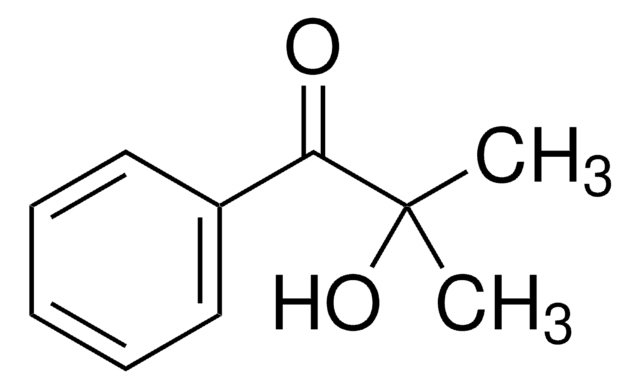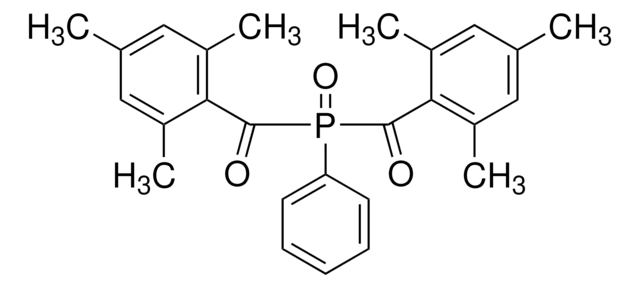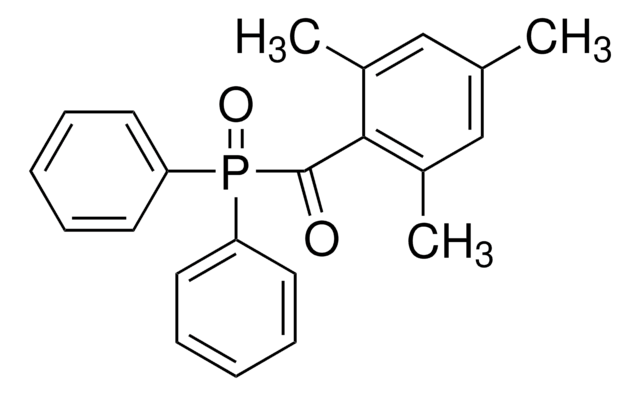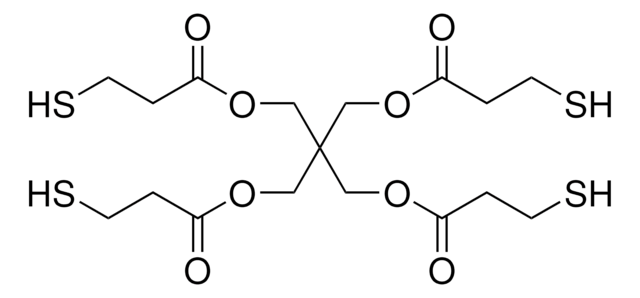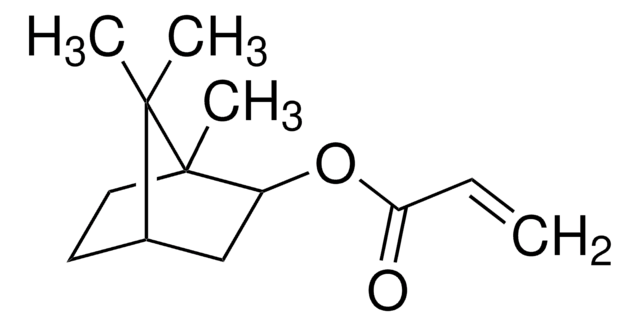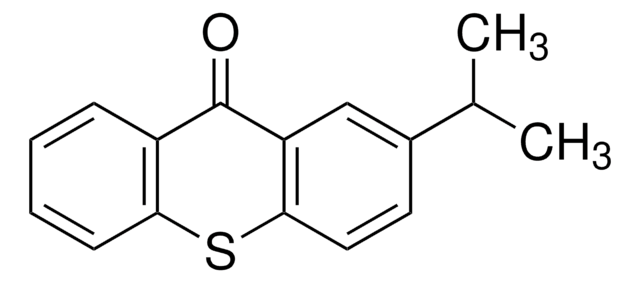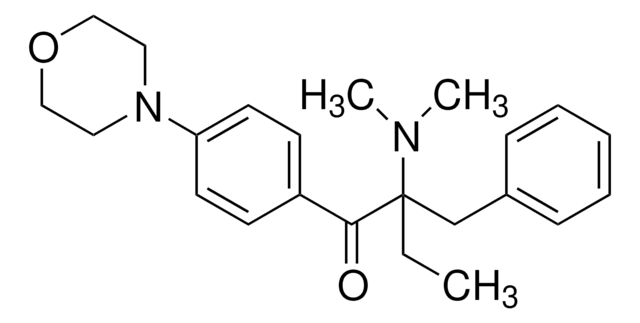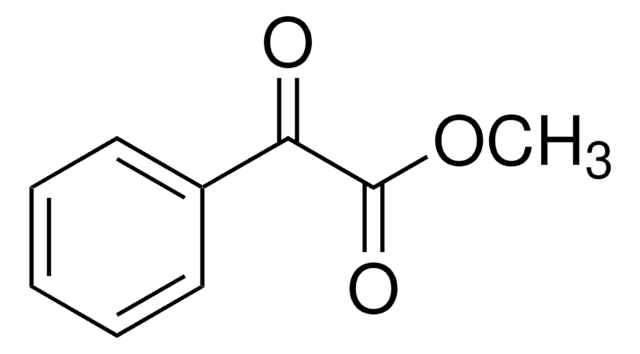405612
1-Hydroxycyclohexyl phenyl ketone
99%
Synonym(s):
(1-Hydroxycyclohexyl)phenylmethanone, 1-Benzoyl-1-hydroxycyclohexane, 1-Benzoylcyclohexanol
Sign Into View Organizational & Contract Pricing
All Photos(3)
About This Item
Linear Formula:
HOC6H10COC6H5
CAS Number:
Molecular Weight:
204.26
EC Number:
MDL number:
UNSPSC Code:
12162002
PubChem Substance ID:
NACRES:
NA.23
Recommended Products
Quality Level
assay
99%
bp
175 °C/15 mmHg (lit.)
mp
47-50 °C (lit.)
SMILES string
OC1(CCCCC1)C(=O)c2ccccc2
InChI
1S/C13H16O2/c14-12(11-7-3-1-4-8-11)13(15)9-5-2-6-10-13/h1,3-4,7-8,15H,2,5-6,9-10H2
InChI key
QNODIIQQMGDSEF-UHFFFAOYSA-N
Related Categories
General description
1-Hydroxycyclohexyl phenyl ketone is a photoinitiator (PI) molecule that can be used in chain transfer polymerization. PI can be incorporated in the polymeric matrix by the addition of a chromophore as a pendant group. It may be used as a component that facilitates UV curing and also as a base material in the formation of the block and grafted copolymers.
Storage Class
11 - Combustible Solids
wgk_germany
WGK 3
flash_point_f
327.2 °F - closed cup
flash_point_c
164 °C - closed cup
ppe
dust mask type N95 (US), Eyeshields, Gloves
Choose from one of the most recent versions:
Already Own This Product?
Find documentation for the products that you have recently purchased in the Document Library.
Customers Also Viewed
Stress Relaxation by Addition- Fragmentation Chain Transfer in Highly Cross-Linked Thiol- Yne Networks
Park HY, et al.
Macromolecules, 43(24), 10188-10190 (2010)
Hang Li et al.
Journal of biomaterials applications, 32(9), 1222-1230 (2018-02-03)
Encapsulated cell viability within crosslinked hydrogels is a critical factor to consider in regenerative medicine/cell delivery applications. Herein, a "click" hydrogel system is presented encompassing 4-dibenzocyclooctynol functionalized polyethylene glycol, a four arm polyethylene glycol tetraazide crosslinker, tethered native protein attachment
Synthesis and characterization of novel well-defined end-functional macrophotoinitiator of poly (MMA) by ATRP
Degirmenci M
Journal of Macromolecular Science, Part A: Pure and Applied Chemistry, 42(1), 21-30 (2005)
Greg C Randall et al.
Lab on a chip, 6(4), 516-525 (2006-03-31)
The ability to controllably and continuously stretch large DNA molecules in a microfluidic format is important for gene mapping technologies such as Direct Linear Analysis (DLA). We have recently shown that electric field gradients can be readily generated in a
Jian Teng et al.
Carbohydrate polymers, 179, 244-251 (2017-11-08)
The ultra-high mechanical, biocompatible and biodegradable porous regenerated cellulose/poly(ethylene glycol) (RC/PEG) composites with double network structure were fabricated via an simple method to dissolve cellulose followed by UV irradiation. The porous structure of RC/PEG was sensitively altered by PEG contents
Our team of scientists has experience in all areas of research including Life Science, Material Science, Chemical Synthesis, Chromatography, Analytical and many others.
Contact Technical Service